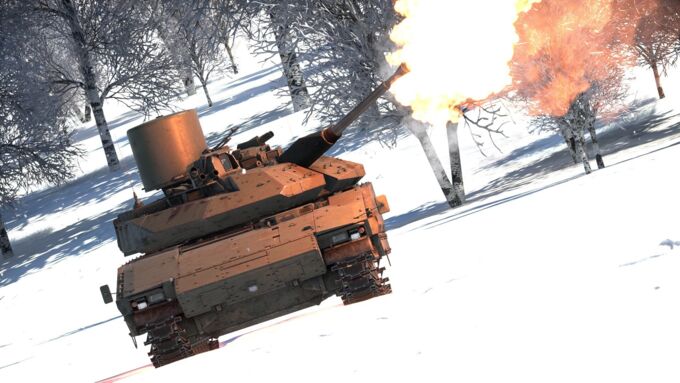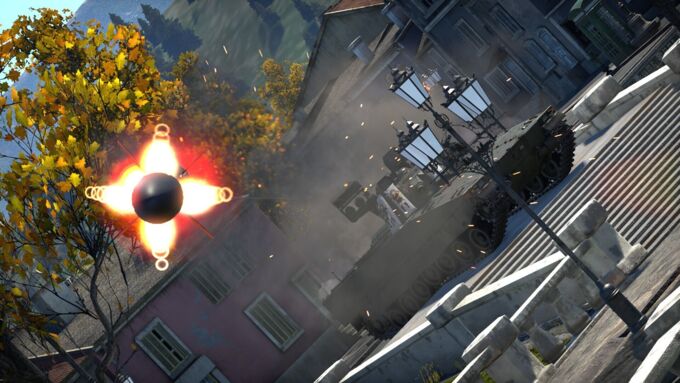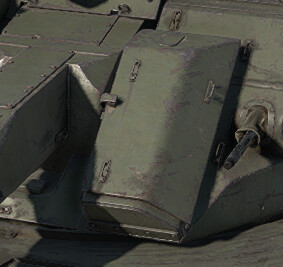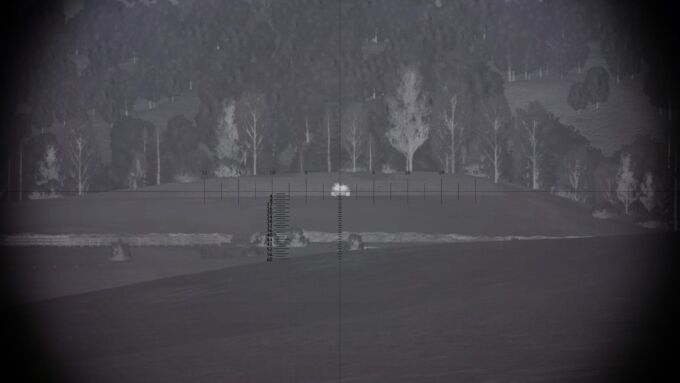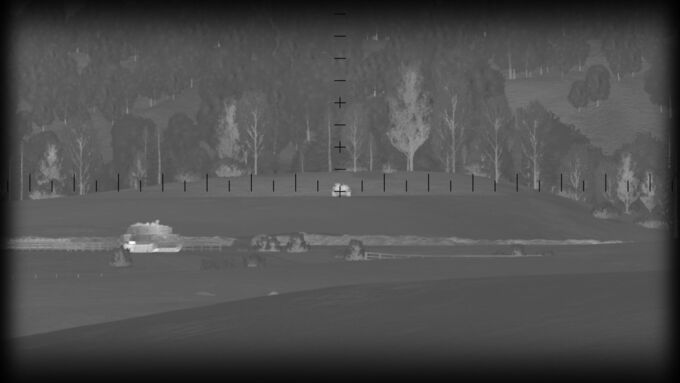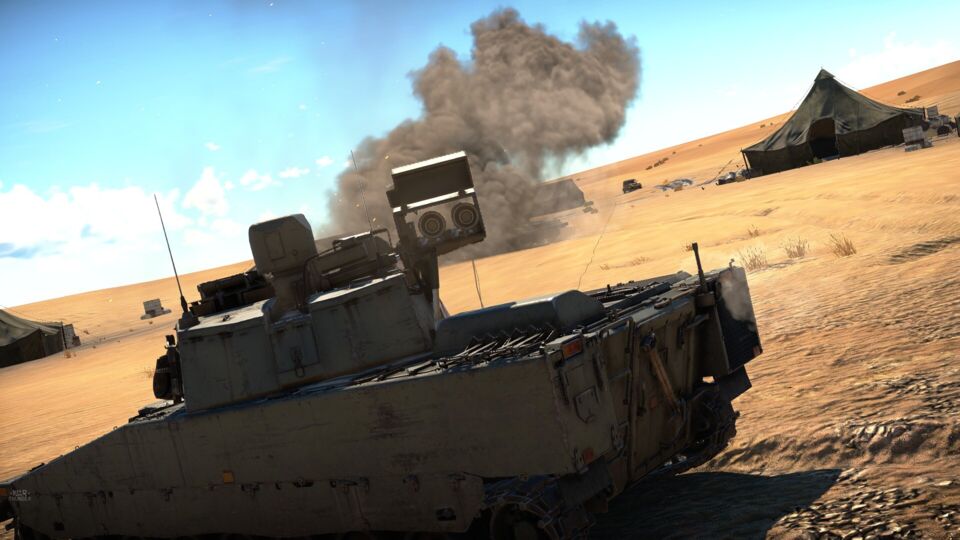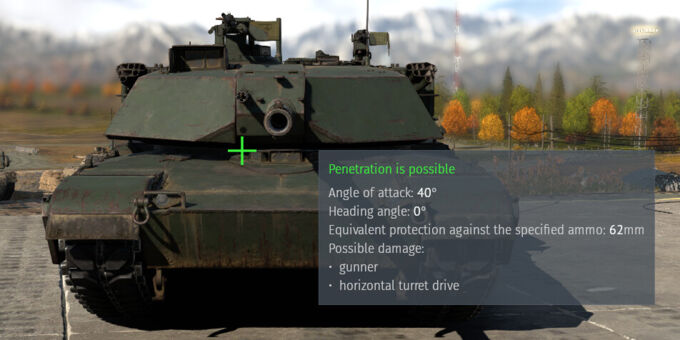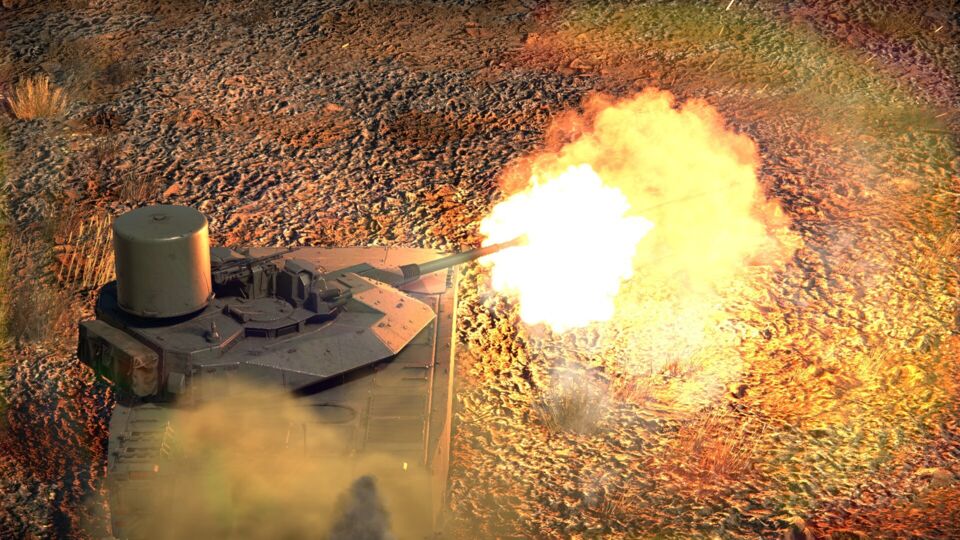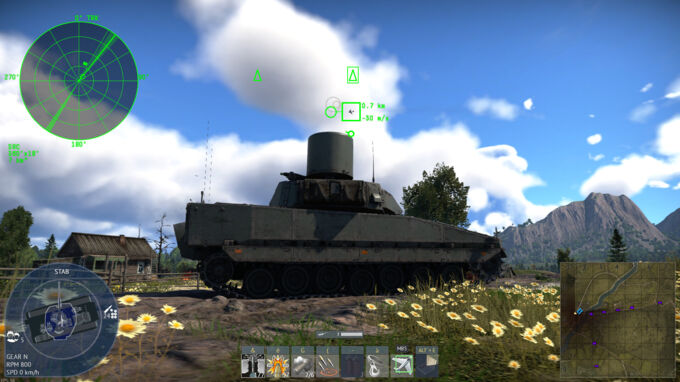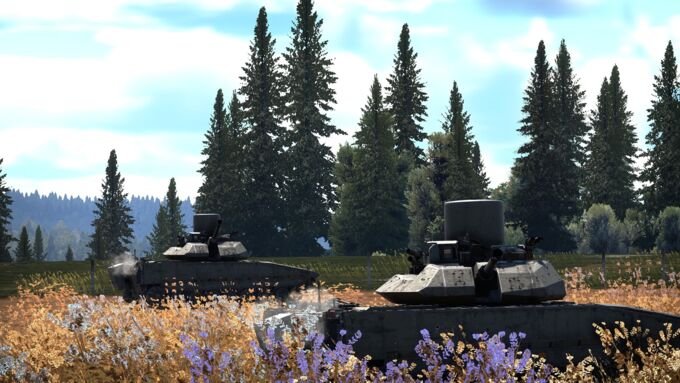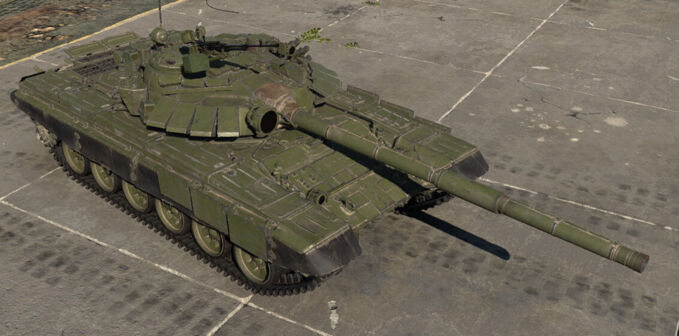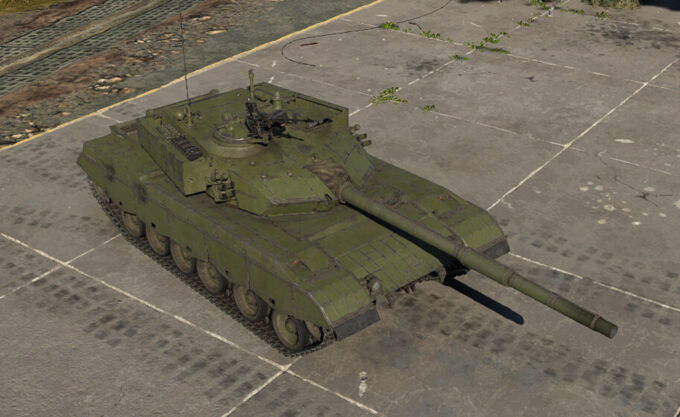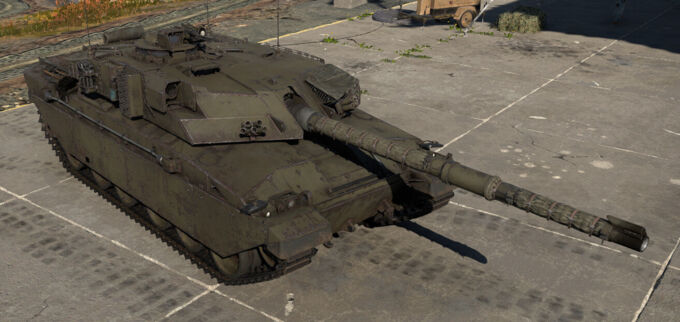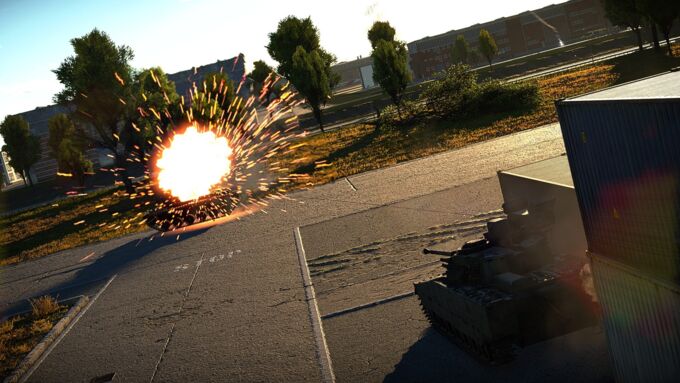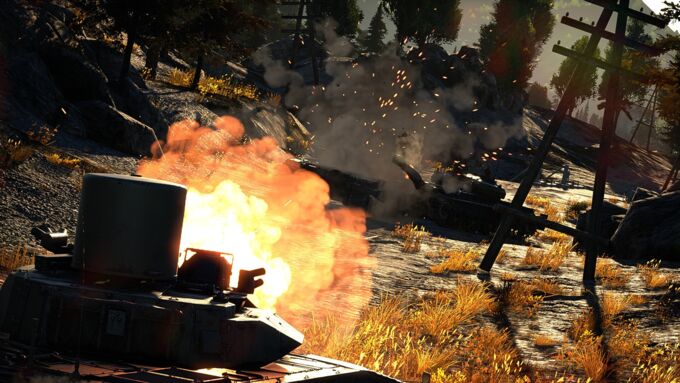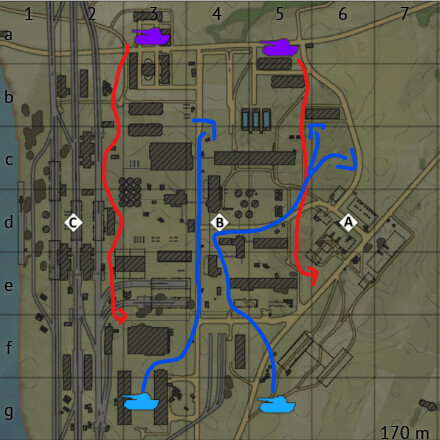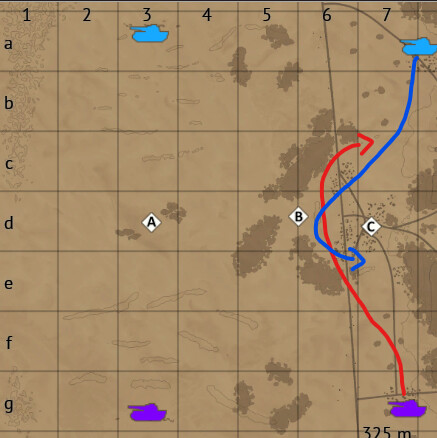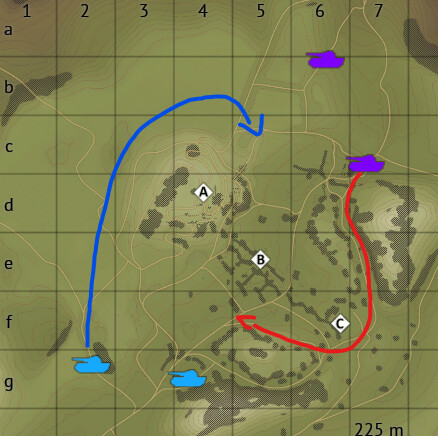The CV90 is a series of vehicles built to withstand extreme weather and fulfil a wide range of battlefield situations. Despite their intent to be used as jack of all trades, masters of none military assets, their ability to fight both enemy armour and airborne threats is separated and maximised in the anti-air-focused Lvkv 9040C and anti-tank-focused Strf 9040 BILL. This article will explore these two developments of the Swedish army and their more niche roles on the battlefields of War Thunder.
Key Terms:
Strf (Stridsfordon) and CV (Combat Vehicle) are terms that can be used interchangeably. “Stridsfordon” is Swedish for “combat vehicle (s),” meaning both terms essentially convey the same idea. The distinction primarily comes into play where (most) Swedish service vehicles are designated as Strf, while export models are referred to as CV.
History
During the Cold War, in the 1980s, the Swedish army needed a new, mobile IFV capable of effectively engaging both air and ground targets. This led to a partnership between Hägglunds and Bofors that gave birth to the earliest prototypes of the CV90 chassis. Over the years, the CV90 chassis was fitted with a range of different turrets, weapons, and other systems.
The CV90 originated in Swedish service, with its primary production under the CV9040 variant, equipped with the Bofors 40 mm cannon. Further development of the CV90 was geared toward export markets, featuring adjustments such as the adoption of more NATO-standard calibres like the 30 mm and 35 mm, designated as the CV9030 and CV9035, respectively. Additionally, various prototypes and technology demonstrators explored up-gunning the hull with calibres ranging from 25 mm to 57 mm, as well as larger calibres like 105 mm and 120 mm.
The Strf 9040, and its evolutions
- Strf 9040
The first CV90—retroactively designated as Mk.0—reportedly rolled off the assembly lines sometime between the early to mid-1990s, though conflicting information exists regarding the exact dates. It was equipped with the 40 mm Bofors cannon, which outperformed the 25 mm M242 Bushmaster chain gun during prototype trials. This cannon became standard for all Swedish service variants of the CV90. The original production version lacked gun stabilization and included the Lyran mortar system.
- Strf 9040A
Featuring extensive chassis modifications, external gun stabilization on the turret front, and upgrades to the troop compartment for enhanced functionality.
- Strf 9040B
The external stabilization was removed and replaced with extensive armament upgrades, including internal turret stabilization, a fire control system (FCS), and a reserve gunner sight. Additionally, the suspension and crew comfort were significantly improved.
- Strf 9040C
Based on the Strf 9040B1, which was modified for peacekeeping missions, this variant incorporated a spall liner, three-piece ammunition storage, and an onboard munition programmer. The Strf 9040C introduced further enhancements for international operations and crew training, including increased armor protection, laser-filtering in all periscopes, and tropical-grade air conditioning. However, these modifications reduced the IFV’s troop-carrying capacity from eight soldiers to six.
Other variants:
- Strf 9040 BILL
The Strf 9040 BILL was a prototype based on the Strf 9040A. While promising on paper and featuring the RB56 BILL ATGM alongside an external observation camera for the commander, the project was ultimately plagued by technical issues, leading to its cancellation.
- Lvkv 9040
The Lvkv 9040 is an anti-air variant of the Strf 9040 series, equipped with a Thomson-CSF Harfang radar. 3 out of the 30 Lvkv 9040A units were upgraded to the Strf 9040C standard.
Weapons and Equipment
| Weapons | Lvkv 9040C | Strf 9040 BILL |
| Main Gun | 40mm akan m/70B | 40mm akan m/70B |
| Auxiliary gun(s) | 7.62mm ksp 58 MG | 7.62mm ksp 39C MG |
| Secondary weapon(s) | N/A | RB 56 BILL ATGM |
| IRST | UTAAS | N/A |
| Search Radar | Thomposon CSF harfang TRS 2620 H | N/A |
| Track Radar | N/A | N/A |
| Ammunition | slpprj m/90, slsgr m/90, kulsgr m/90 | slpprj m/90, slsgr m/90, kulsgr m/90 |
| Primary Armor material | Composite Screens | Rolled Homogeneous Armor |
| Smoke Grenade(s) | 76mm (x6) | 76mm (x3) |
| CITV | No | Yes |
| Power to Weight Ratio (Hp/t) | 23.2hp/t | 19.2hp/t |
Mobility
The Lvkv 9040C and Strf 9040 BILL both feature the DSI14 engine. While it provides decent power for the vehicles' respective weights, both are quite sluggish, with top speeds ranging between 40 and 50 km/h in battle. This is relatively slow for an IFV at this Battle Rating.
Sights
Both vehicles feature high-definition thermals with a fixed 8.0x zoom for the gunner sight. The Strf 9040 BILL has the added advantage of a CITV (commander independent thermal viewer) with a zoom range of 2.0x to 8.0x.
Where Two Paths Diverge
Despite having the same gun and optics, their different combat roles mean they have noticeable differences, this next section will focus on how their weapons should be employed, and how both vehicles should be played in a Ground battle
Strf 9040 BILL
The Strf 9040 BILL is an IFV capable of defeating both heavy and light armour. The latter isn’t much of a challenge, as the Bofors cannon can boast a high rate of fire and impressive post-penetration damage with its APFSDS rounds.
Things to watch out for:
- The Strf 9040 BILL uses the older Strf 9040A chassis, with its gun not well stabilized. Only offers a slow-speed stabilizer up to 30 km/h.
- Additionally, with the older hull, it has weak armor, which can be penetrated by 12.7 mm machine guns.
- The RB56 BILL ATGM can only fire when the vehicle is stationary, and its launcher requires time to deploy after the vehicle stops or begins moving slowly. The ATGM launcher cannot elevate or depress.
- This vehicle has a ready
rack of 24 rounds, so be cautious when firing the gun continuously to
avoid running out of ammunition too quickly.
Dealing with heavy armor frontally
At its BR, the most common vehicle class you’ll face will be MBTs and other heavily armoured targets. From the side, these vehicles are relatively easy to deal with, but from the front, a new challenge arises. Fortunately, nothing is completely invincible to your mighty 40 mm gun.
When facing MBTs from the front, always aim for the breach or the barrel to prevent the enemy tank from returning fire. Once the enemy is unable to fire at you, you can either continue using the 40 mm cannon or fire the BILL ATGMs. The former is more favourable when targeting vehicles like the Abrams, which has an exposed turret ring—a considerable weak spot for the Bofors cannon.
The RB56 BILL ATGM
The RB56 BILL is an exclusively top-attack ATGM, much like the TOW-2B. This provides significant advantages, such as bypassing all protected armour and ERA on heavily armoured tanks, targeting the relatively weak turret and hull roofs instead. This top-attack ability also allows it to hit targets hiding behind cover.
However, like other top-attack missiles, the BILL comes with notable disadvantages. It uses a proximity fuse to activate the top-attack mechanism, which means that a destroyed or friendly tank in the line of fire will trigger the ATGM. Additionally, the missile launcher cannot elevate or depress, requiring level ground to effectively target ground vehicles.
If an enemy tank cannot be eliminated using either the Bofors cannon or the ATGM, it’s best to scout the target, call in artillery, and retreat, allowing allied armour to handle the enemy.
Lvkv 9040C
The Lvkv 9040C is an anti-air vehicle with the improved Strf 9040C chassis featuring addon armour to the turret to provide extra protection against small arms fire, along with a radar used against air targets.
Things to watch out for:
- The radar cannot be used to lock targets from the third person view, you must press the “Lock Radar/IRST target on” key-bind in the gunners sight, while looking at the target
- This vehicle doesn’t feature a CITV, or scouting, limiting its role as support to your teammates
Dealing with heavy armour frontally
Unlike the Strf 9040 BILL, this vehicle does not feature an ATGM for engaging heavily armoured targets. As a result, it is best used to disable enemy tanks, leaving them vulnerable to be finished off by teammates.
Destroying air targets
The addition of the radar makes it possible to properly use its kulsgr m/90 HE-VT round, which paired with the fast fire rate makes it very good at dealing with helicopters, and unsuspecting fixed-wing aircraft. The HE-VT round should be fired in short bursts at longer ranges, to avoid wasting ammunition, and it is best to wait for attacking aircraft to fly in a straight line over the battlefield to truly catch them by surprise
Gameplay
At the start of a match, it is important to choose routes that do not leave you exposed to enemy fire, as the vehicles' slow speed limit their ability to reach key positions before MBTs arrive. Additionally, the slow turret traverse makes it difficult to react to enemy fire in time, which is why a more conservative playstyle is preferable for these vehicles.
When engaging enemy tanks, it is important to catch them off guard by staying unspotted. Each engagement should be brief to avoid depleting your ready rack, and frontal attacks in close-quarters combat (CQC) scenarios should be avoided, especially against the following key targets:
- Soviet PACT vehicles like the T-72, T-80, and ZTZ series.
- The heaviest NATO vehicles, such as the Challenger II.
Positioning (passive gameplay)
When driving into battle, long-range sniping spots should be avoided, as they can make it difficult to hit the weak spots of MBTs. Additionally, the RB56 BILL of the Strf 9040 BILL is relatively slow, traveling at only 250 m/s. This means it is unlikely to reach passing vehicles in time, and you will need to remain exposed for long periods. Instead, focus on finding spots where enemies off can be caught off guard, preferably from the side. This can be achieved by hiding behind a wall or rock, waiting for vehicles to pass by—often on their way to capture zones or get into positions of their own.
Positioning (aggressive gameplay)
When playing aggressively with these vehicles, avoid facing enemies head-on. Instead, try to manoeuvre around common routes and key areas of interest on the battlefield to engage the enemies from behind their lines. While doing this, it’s important to stay mobile, which helps to achieve the element of surprise. Additionally, stay aware of your surroundings, as you will likely be operating alone and may be vulnerable to flanking or surprise attacks.
Examples of Flanking routes:
Closing word
The gameplay of War Thunder is nuanced and can change with every match. Always aim to adapt the tips shared in this article to suit your own playstyle, and remember, the most important thing is to HAVE FUN!
Thank you for reading this article on the mighty Swedish Bofors warriors!!!
